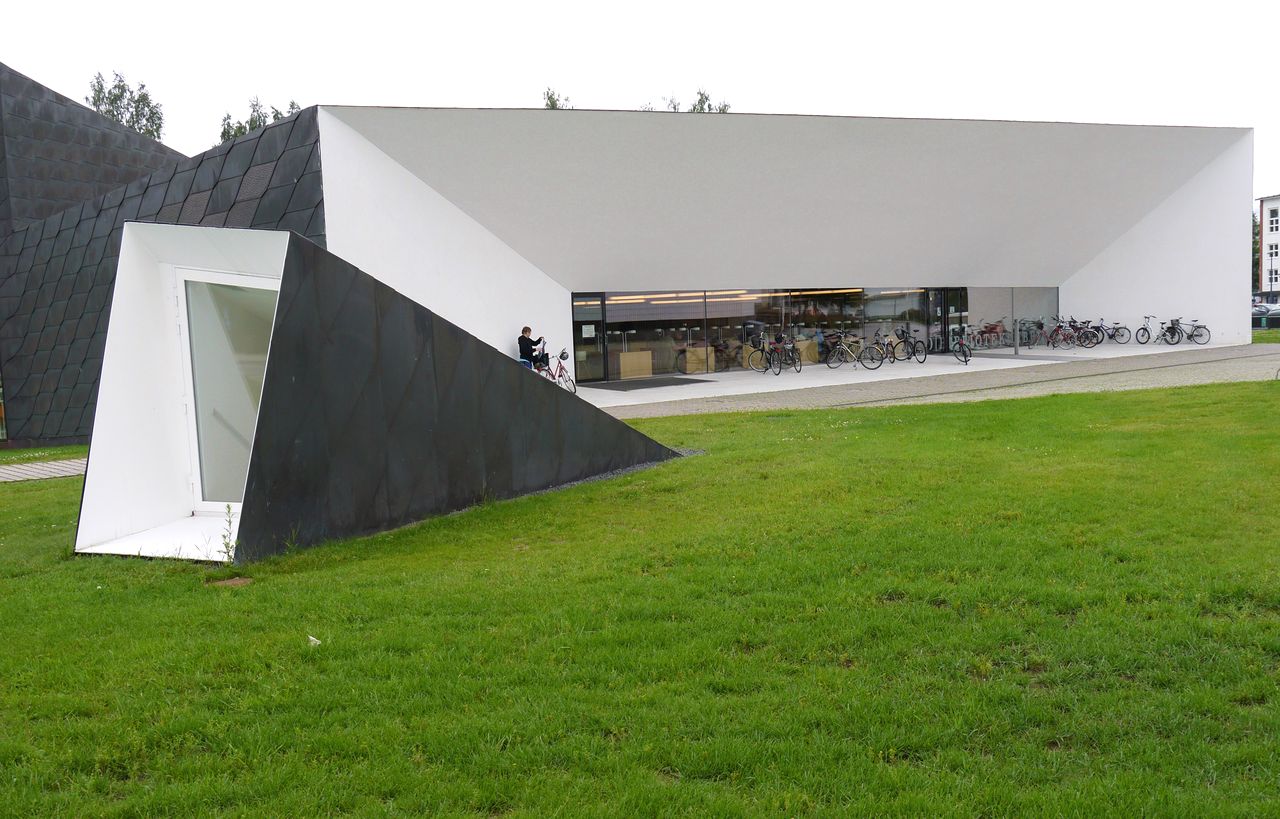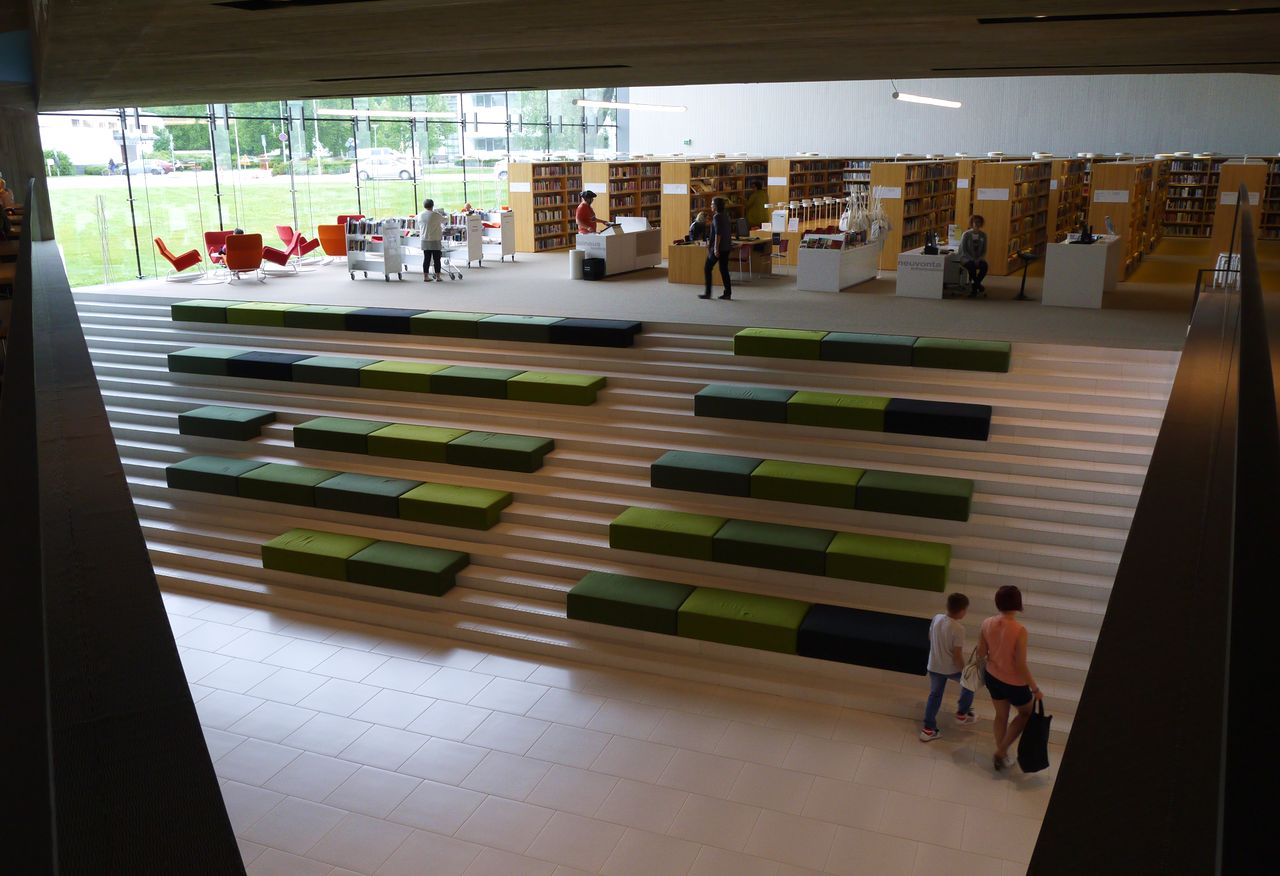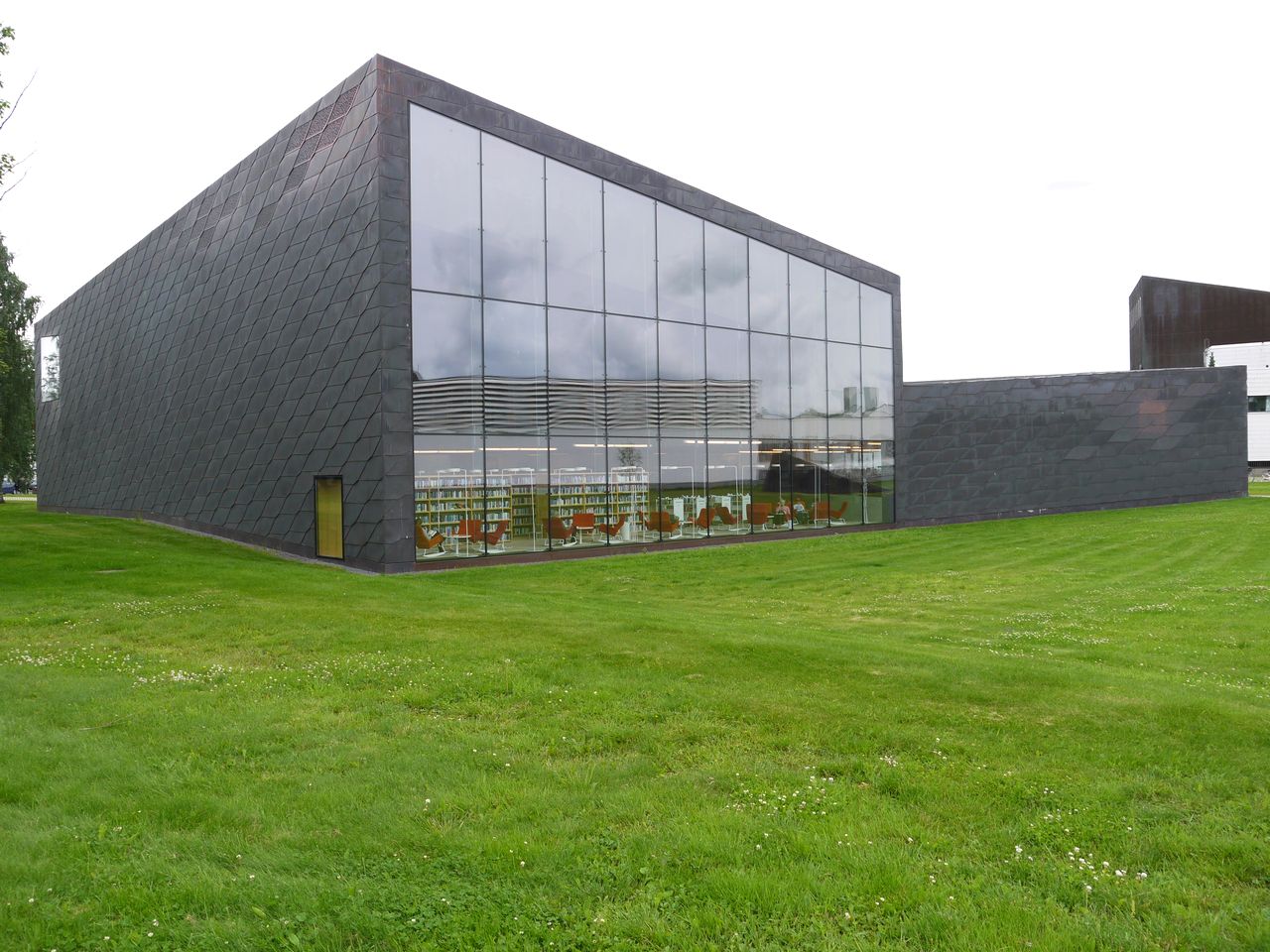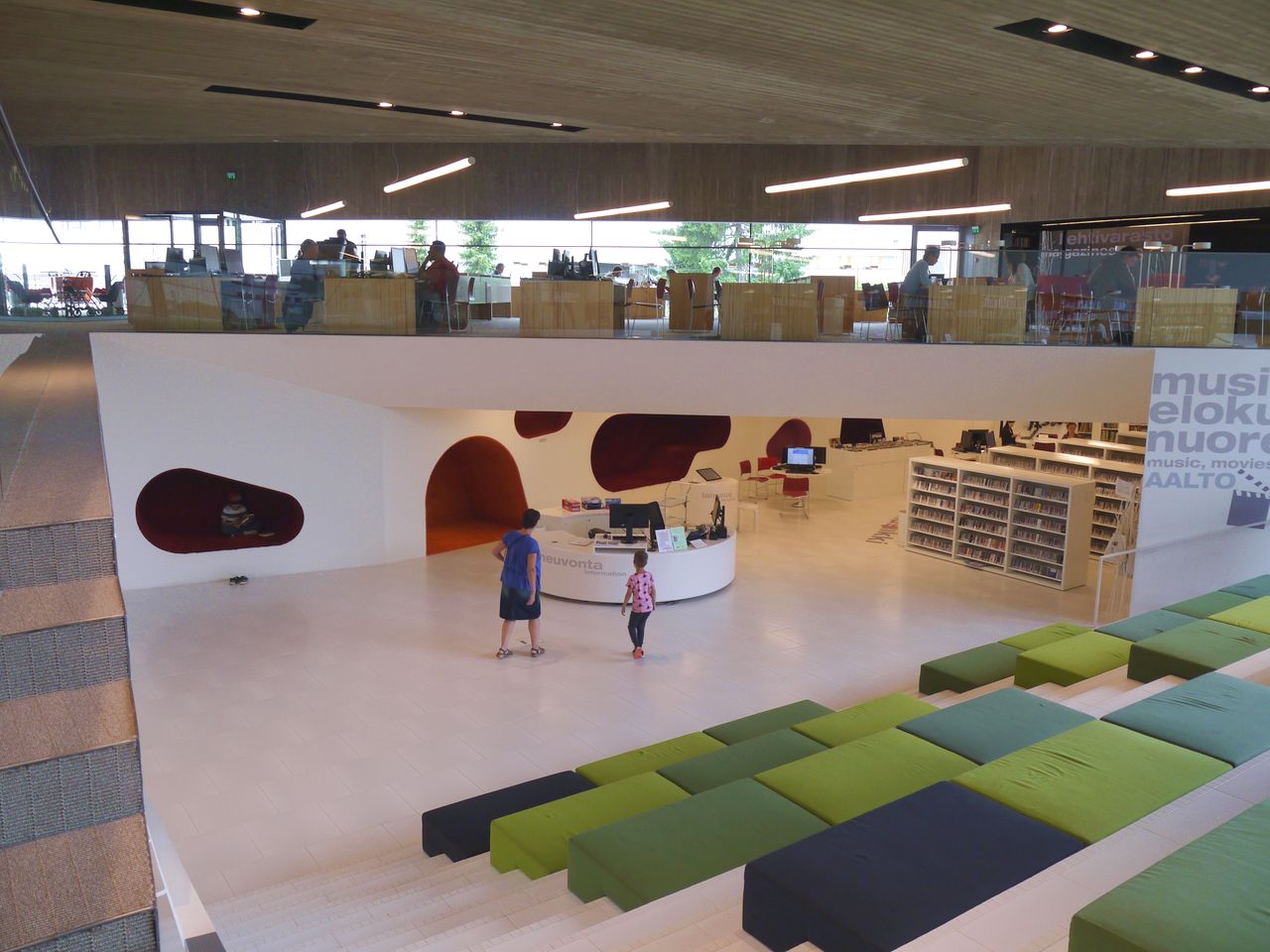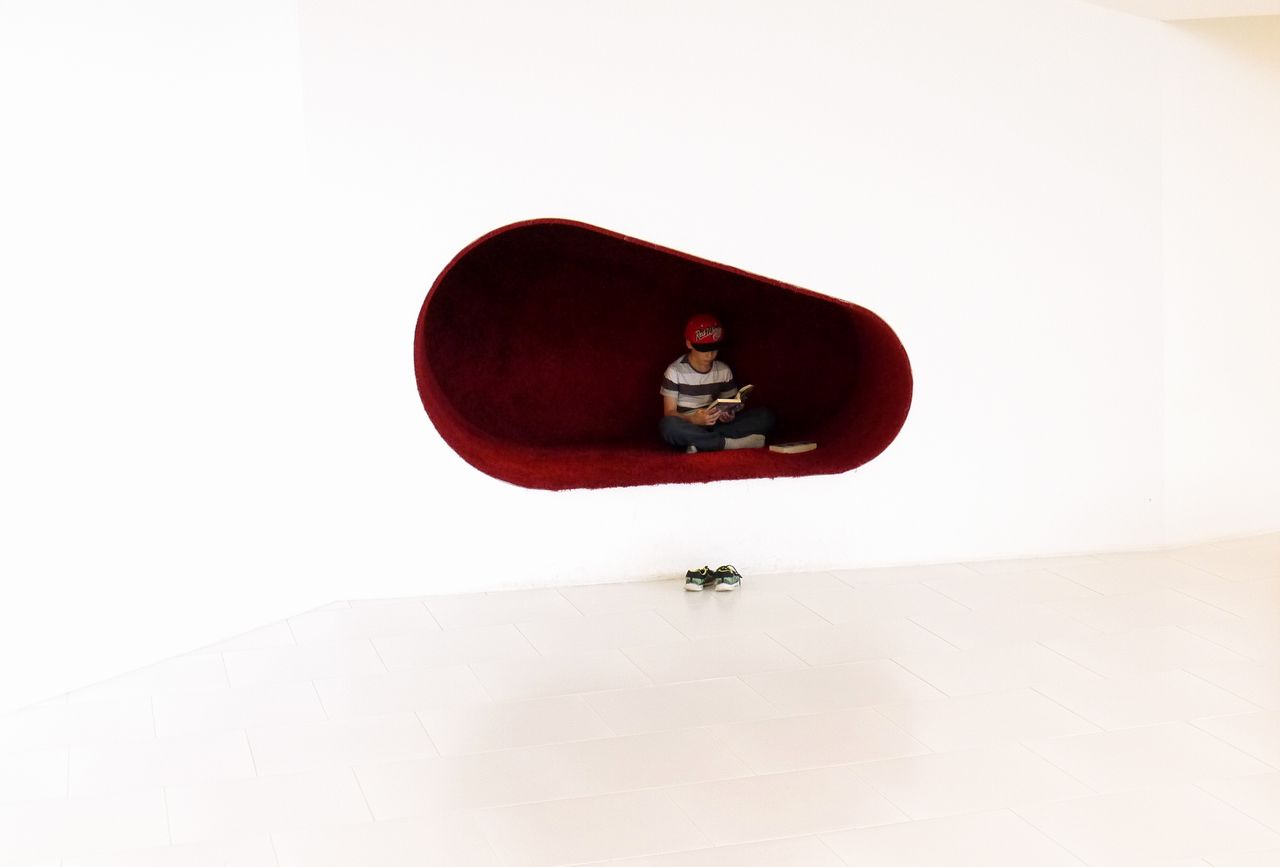Public libraries all over the world have a new problem to solve: how to provide the best possible services to citizens when the core service of a library – printed book – is transforming to digital format. Ebooks can be checked out from a library at home sofa, at beach chair or at hospital bed. We firmly believe libraries as public spaces are needed in the future as well, but how they will look like and what they might actually do is another thing.
One of the first real life experiments with next generation library is being conducted in Texas, USA. Bexar County has opened an all digital library called Bibliotech. There are no physical books for people to loan, but computers, tablets and ereaders where library card holders can loan and read ebooks (or hang out on the Internet). Library staff is always there to help with books and with technology.

The town of Thionville in northern France didn’t go all digital when it opened a new library in 2016. It is a beautiful modern building with plenty of space for activities, like sipping coffee, having a picnic on the roof, or playing instruments in soundproof rooms. The architects explained to Fast Company that the objective was to build spaces for the community. Printed books are available in the library, as well as ebooks and other forms of digital media.
Thionville doesn’t even call its new building a library, but Mediatheque.
Before we continue to Seinäjoki, Finland, take a look at a video introduction to the Mediatheque of Thionville, France. Mediatheque was opened in 2016. It was designed by the Strasbourg-based firm Dominique Coulon and Associates.
Let’s jump from Central Europe to Northern Europe in order to find out what kind of libraries are being built in Scandinavia. One of the most liked and celebrated new libraries in Finland was built in Seinäjoki, in the central region of the country. The Apila (Shamrock) Library, designed by Helsinki-based architects JKMM, opened in 2012.
The primary service in Seinäjoki library is still printed books, but community spaces, activities and digital media have their own nooks, rooms and corners as well. The shadow of Finland’s master architect Alvar Aalto was a factor in the design process because buildings designed by Aalto are located around the new library.
Now, take a look at the following photo gallery of the Seinäjoki Apila Library and compare the pictures with the video images of the Thionville library. There are a number of details and large design solutions that resemble one another in these two libraries, even though the architects are different. Perhaps it is a sign that libraries are finding one common way to serve citizens in the digital future.

